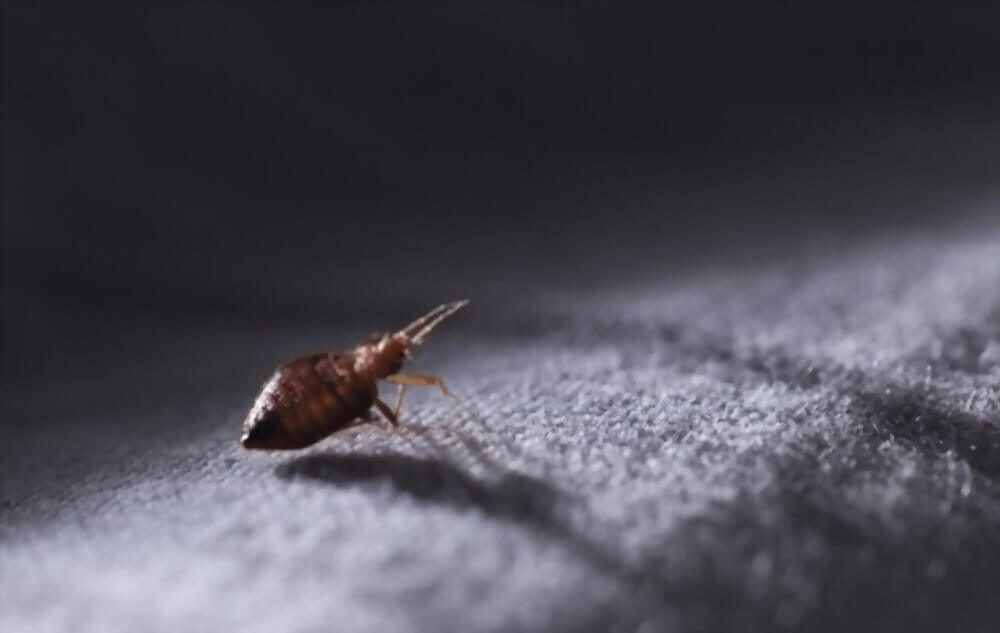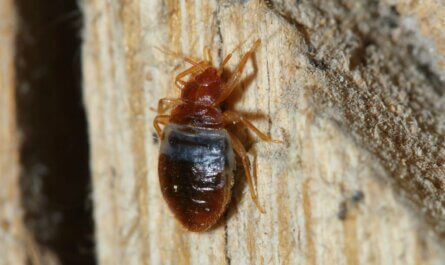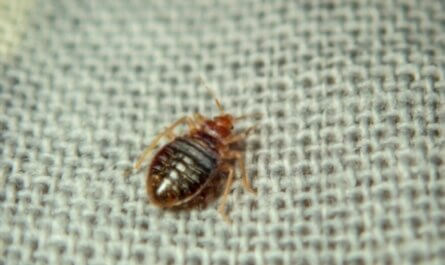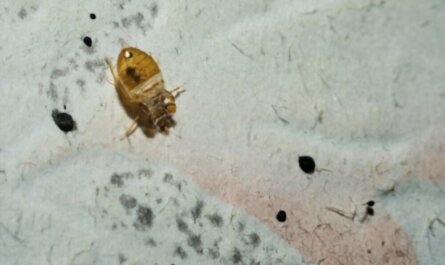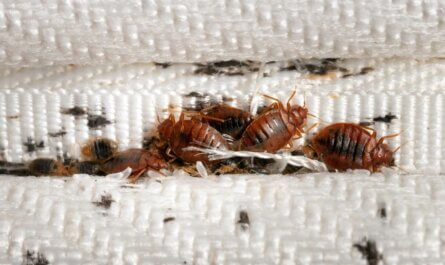Finding bed bugs during the day can be tricky, as they only come out of hiding when it’s dark. But even in daylight hours, there are signs to look for that point to an infestation.
In this article, we will walk you through how to identify potential bed bug activity during the day so that you can take action and prevent further spread of these pesky insects. Ready to get started? Let’s dive into finding out where bed bugs hide and how to spot them !
Key Takeaways
- Bed bugs will hide near sleeping areas during the day and feed on humans or other animals at night.
- Signs of an infestation that can be detected during the day include dark, red, or rusty stains on bedding, eggs/shells in cracks and crevices, shed exoskeletons near beds or nest sites and live bugs.
- Detection methods for locating bedbugs during the day can include using a flashlight to check crevices and furniture for unexpected stains, eggs and shedding exoskelets as well as setting traps baited with pheromones or insecticides if deemed appropriate.
How Bed Bugs Behave During the Day
Bed bugs remain close to areas where people sleep during the day, and they feed on hosts other than humans, so monitoring for signs of infestation can help identify problems early.
Bed Bugs Stay Close to Sleeping Areas
Bed bugs are nocturnal creatures but they can take refuge during the day as well. They prefer to stay close to where their food source resides: our beds, couches and other sleeping quarters.
To survive, bed bugs must have access to blood on a regular basis; hostseeking behavior drives them most often near hidden areas within bedrooms or other lodging options during the day, allowing for efficient feeding at night unbothered by human activity.
Bed bug infestations commonly occur in places like apartments, hotels and shelters because of these tendencies and the slow-building nature of an infestation – it takes time for their population to reach noticeable numbers and begin bothering humans through sleep disturbance alone.
Bed Bugs Don’t Just Feed on People
Bed Bugs are often believed to exclusively feed on human blood, but this isn’t the case. While they do prefer humans, especially in overcrowded urban areas such as apartment buildings, hostels and hotels, bed bugs will also feed of animals.
They can range from house pets to livestock or wild animals depending on their location and proximity; a fact that makes it even harder for homeowners or renters to eradicate an infestation.
Not only might the unexplored source provide more food for the little critters during diurnal activity when people are usually oblivious, their preference varies with different stages of development too: older adults may have a preference for birds and small mammals like mice whereas younger ones tend to favor lizards or small reptiles..
Host preferences can depend on the level of infestation too: larger populations may place more strain leading them towards other sources such as clothing moths, Musca domestica fruit flies (frequently found near kitchen waste) and mosquitoes that often carry diseases themselves.
Bed Bug Populations Build Slowly
Bed bugs are a global problem, and they’re notoriously difficult to get rid of. Although adult bed bugs can live for more than a year without feeding on blood, they rely heavily on reproducing to maintain their population numbers.
Female bed bugs lay up to three eggs per day, which may sound like a lot compared to the average Insect. But when considering how quickly some insects reproduce (fruit flies produce a new generation in just eight days), it’s clear that this rate isn’t enough for any dramatic population increase in the near future.
This slow reproductive cycle makes it easy for small bed bug infestation problems to spread out of control if not taken immediately seriously and dealt with properly; And is why it is important that proactive control measures have all areas affected by potential problems checked regularly or inspected by professionals.
Signs of Bed Bugs During the Day
Look for signs of dark, red or rusty stains on bedding and furniture; check vulnerable areas such as cracks and crevices for bed bug eggs or eggshells as well as shed exoskeletons; keep an eye out for living bugs.
Dark, Red or Rusty Stains
Dark, red or rusty stains are a common sign of bed bugs present and active during the day. These stains can often be found on bedding, such as mattresses, sheets, and pillowcases – in corners and seams of mattresses – around headboards or other upholstered furniture items – between cushions / seats – or behind electrical outlets.
They typically appear as an irregularly shaped smear that is reddish-brown or rust colored. This type of stain happens when a person sleeping in the area crushes bed bugs while they feed from their host’s blood supply; it may also come from their excrement which is primarily undigested blood.
Finding these dark red or rusty stains is an effective way to identify potential infestations early on so it’s important for homeowners, renters, landlords, travelers and pest control professionals to be vigilant & check beds for them regularly to detect infestations promptly.
Eggs or Eggshells in Protected Areas
Bed bug eggs are tiny, measuring only about one millimeter in size. They are cream-colored and usually hidden near a food source, such as a bed or sofa, in protected areas like cracks and crevices.
Bed bug eggs may be found singly or in clusters within these hiding places. The presence of bed bug eggs is indicative of an infestation that needs to be addressed immediately by pest control professionals; this is because bed bugs can lay up to 500 eggs at once with each female able to produce several hundred more during her lifetime! Therefore it’s important to check for signs of infestation regularly.
When inspecting bedrooms, closets and furniture always look closely at cracks and crevices; if you see anything that resembles tiny white specks, creamy colored feathers or discolored streaks which could indicate the presence of eggshell remnants then get professional advice right away.
Shed Bed Bug Exoskeletons
Shed Bed Bug Exoskeletons are the remnants of mature bed bugs that have shed their exoskeleton after molting. These exoskeletons, which are small and an creamy tan color, can be a reliable indicator of active bed bug activity in an area as they tend to gather along mattress seams, headboards or baseboards.
Homeowners and landlords should keep an eye out for these exoskeletons if suspicions arise around potential bed bug infestations. Carefully examining cracks and crevices is particularly important when trying to identify a possible infestation, as this is where the insects commonly hide during the day time hours before emerging at night to feed on blood from humans and other warm-blooded animals.
Probing with a flashlight may reveal discarded exoskeletons deposited near family sleeping areas so you must never underestimate them since neglected cases can quickly escalate into larger problems over time if not addressed correctly.
Living Bugs
Living bugs are small, brownish insects that feed solely on blood from animals, including humans. During the day they hide in cracks and crevices adjoining mattress or furniture seams.
Signs of presence include dark red or rusty stains on sheets, eggs or eggshells in a protected area (such as under floorboards), shedding of exoskeletons, and large groups of living bugs near mattresses.
These pests don’t just infest beds; they can also be found tucked away inside furniture, clothing items such as shoes and jackets, luggage taken on trips abroad – you name it! Additionally, these critters can move quickly over walls and ceilings – although bed bugs do not fly – which means even unsuspecting travelers may pick them up while staying at a hotel during vacation breaks.
If you suspect there might be bed bugs lurking somewhere in your home then consider using a flashlight to look for evidence among all the usual hiding spots; probing cracks and crevices with fast movements should help sparkle out any moving adults too.
Techniques for Finding Bed Bugs During the Day
Utilize a flashlight to thoroughly check crevices and furniture for unexpected stains, eggs or shedding exoskeletons during the day.
Use of a flashlight
Playing detective by using a flashlight is the most efficient way to find bed bugs during the day. Flashlights can help massively in locating hiding pests, as they emit bright light which allows even dark corners and crevices to be illuminated. You should focus on checking all beds and furniture for any signs of bed bug activity such as small red or black spots that could indicate blood stains from crushed bed bugs.
Probing cracks and crevices
is a highly effective technique for finding bed bugs during the day. Bed bugs tend to hide in these tight spaces due to their small size, making them difficult to spot with the naked eye. They commonly reside near sleeping areas such as beds and mattresses, inside wall outlets and electronic components, under baseboards and trimming, behind wallpaper and even inside furniture cracks. Probing these cracks and crevices is an important part of locating hidden populations that are missed by other forms of detection such as sweeping or wiping down surfaces with cleaning solution.
Setting traps
is a useful tool when looking for bed bugs during the day and can help detect an infestation. Trapping devices, such as sticky traps, intercept monitors and dry ice reservoirs are all effective ways to locate them even if they are not visible.
- Sticky Traps: Sticky traps consist of glue boards or sheets that attach to walls or areas adjacent to where people sleep, catching any pests that come into contact with it. Since bed bugs bite at night primarily, setting these up overnight will trap any nearby bedbugs trying to feed on humans.
- Intercept Monitors: These small screen boxes contain pheromone and food lure which attracts passing insects including bed bug adults or nymphs attempting to move from one hiding spot to another. When unsuspecting insects walk across the monitor their legs get stuck in the adhesive stationed inside making them unable capture prey .
- Dry Ice Reservoirs: Made with double layered material containing CO₂ gas supplies released through tiny holes in its structure , these trick unsuspecting wandering bed bugs into entering suspecting safety this toxic environment kills them within minutes allowing absent pest professionals or homeowners alike easily spot active sites hosting live populations making it easier for everyone involved quickly eradicate current dwelling your home pest free!
What to Do After Finding Bed Bugs
- Hire bed bug sniffing dog service to detect and eliminate any remaining bed bugs in your home.
- Vacuum the area and then dispose of the vacuum bag to prevent the spread of infestation.
- Thoroughly inspect mattress, box spring or other furniture for bed bugs with a flashlight.
- Place traps and monitors in the suspected areas of infestation like premium glue traps, interceptor cups, boxspring encasements, and mattress covers.
- Use insecticide sprays specifically designed for bedbugs on affected areas]
- Use steam cleaning techniques to remove live bugs, eggs, and exoskeletons from upholstered furniture.
- Professional exterminators may be consulted for advice on severe infestations or heat treatment.
- Wash clothing, linens, pillow covers in hot water (minimum 120 degrees Fahrenheit) to kill any eggs that may be present.
- Dry items on a medium to high tumble drying cycle which can further aid in elimination of traces of eggs.
- Visually inspect secondhand furniture before bringing it inside as potential sources of infestation from previous owners.

